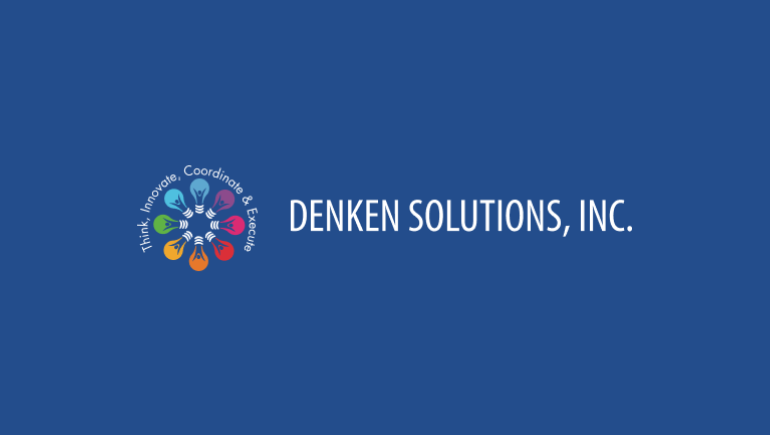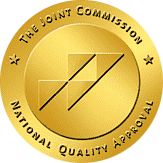How to Attract and Retain Your Contingent Workforce

The upsurge of the gig economy ever since the pandemic, the prioritization of flexible work models, and the widening skill gaps due to technological advancements have caused employers to rethink and redefine their workforce management strategies. In view of the tight labor market, it is critical for organizations to attract and retain top talents to gain a competitive edge.
According to a recent release by the U.S. Bureau of Labor Statistics, around 4.3% of workers (6.9 million people) held contingent jobs as their sole or main job.
This clearly suggests the increasing inclination of job seekers and professionals in temporary and contractual job roles, considering the diverse work opportunities, flexibility, and work-life balance such roles bring in. While leading-edge organizations today have started prioritizing and embracing a contingent workforce management strategy, they often lack the right approach to attract and retain top talents.
In this article, we will delve into the top contingent workforce management strategies aimed at attracting and retaining contingent workers for business success.
Top ways of attracting and retaining contingent workers
As the reliance on contingent workers grows alongside the ever-evolving market dynamics, employers or business leaders need to consider developing a gripping strategy for attracting and retaining their contingent workforce. Here are the key points that you need to consider while shaping your contingent workforce management strategy.
- Deliver a positive worker experience from the very beginning
Employers often refrain from following a robust and formal onboarding process when hiring and engaging contingent workers. Considering the temporary nature of contingent job roles, employers attempt to integrate them into tasks quickly to save time and costs. However, this approach is likely to decrease the engagement of your contingent workers while increasing their conflicts with full-time teams. To avoid such consequences, it is necessary that you elevate the worker experience right from the beginning of the talent acquisition process. A strong and efficient onboarding process is crucial for contingent workers as it helps make them aware of their roles and responsibilities along with the organization’s policies and norms in clear terms.
Once you hire a contingent worker, you can start setting the right tone for a positive working relationship through enhanced communication and collaboration. Not only formal meetings but informal gatherings can also prove to be fruitful for the purpose. For instance, one of the managers at Denken’s client organization made it a point to have lunch together with his contingent worker on day 1 to ensure he built a strong working relationship at the very beginning, and it has definitely paid off.
- Offer fair compensation
To demonstrate that an organization values all its workers equally, it must ensure fair compensation, performance-based rewards, and recognition for contingent roles, comparable to what it would pay fixed, full-time employees in similar positions. For instance, during a gathering of contingent workforce vendor CEOs, one CEO shared a striking example. He had recently signed with a leading global tech company but noted that the rates offered for a software engineering role were 40% lower than what his son—a recent college graduate—was earning at the same company. The contingent role required 6-7 years of experience, yet the compensation failed to reflect this. Such disparities make retaining contingent workers challenging and lead to negative experiences, especially when such details inevitably come to light.
A little of an industry secret: employers should build in reasonable inflation-adjusted bill rate increases. The bill rates vendors competitively bid for two years ago may no longer be sufficient to attract and retain top talent. Adjusting rates ensures the offer remains compelling for contingent workers. Not only does this help attract high-caliber talent, but it also enhances the loyalty and job satisfaction of your existing contingent workforce. Compensation remains a decisive factor for candidates when accepting job offers, making it essential to address these elements as part of a comprehensive contingent workforce management strategy.
- Provide professional training and development opportunities
Apart from making the contingent employees valued through fair compensation, rewards, and recognition, it is necessary to design and implement proper training, mentorship, and upskilling programs for them to remain competitive in today’s business environment. Since contingent workers are mostly hired for time-based projects or business needs, they look for professional learning and development opportunities to develop new skills and step up their competencies for securing future job roles. Hence, by adhering to the training and mentorship needs of your contingent workers, you can demonstrate your commitment to their professional development.
For example, some of Denken’s client companies have LinkedIn learning available for their contingent workers. This presents a valuable learning opportunity for improvement. Approaches like this would not only help you develop a skilled contingent workforce but also strengthen your brand reputation, making it easier for you to attract talent. In fact, professional development opportunities, alongside reasonable benefits and perks, would act as supplements to make your contingent workers come back to your organization when needed again.
- Prioritize communication and collaboration
Two more major components that must be included in your contingent workforce management strategy for engaging and retaining contingent workers are communication and collaboration. No matter whether your contingent workers are working remotely or on-site, you need to outline your business or project goals, timelines, tasks, and what you expect from them in clear terms through proper communication.
Besides making them understand their roles and responsibilities, you need to establish proper communication channels to enable them to collaborate with your full-time teams efficiently. Open communication platforms and effective collaboration make your contingent workforce feel valued, empowered, and motivated. With the use of virtual meeting tools such as Google Meet and Microsoft Teams, you can efficiently connect with your remote contingent teams whenever needed.
- Follow flexible work norms
One of the major breakthroughs that the COVID-19 pandemic phase has brought in today’s work models is flexibility by means of remote or hybrid work mode. This flexibility not only provides the right work-life balance to employees but also enables employers to extend their reach to a diverse pool of talents across the globe. Modern-day workers value flexibility, and as such, your contingent workforce management strategy should focus on remote or hybrid work norms, flexible working hours, etc. Offering the desired flexibility and freedom to contingent workers helps attract and retain the best talent for longer periods.
- Encourage an inclusive workplace culture
As stated earlier, effective collaboration is the key to building a successful contingent workforce management strategy. In addition to collaborating with contingent teams for work-related updates, it is recommended that you foster inclusivity through periodic feedback, team-building exercises, and mentorship programs. To ensure delivering a positive contingent worker experience throughout their tenure, you need to recognize and appreciate their skills and efforts through structured feedback mechanisms.
A two-way communication approach is necessary to ensure that you closely monitor the activities of your contingent workers while, at the same time, proactively responding to their issues and concerns. Also, you should strategize to make your contingent workforce a part of important meetings or events alongside your permanent employees. This provides an equal opportunity for contingent teams to bring their ideas and perspectives to the table, giving them a sense of belonging and a feeling of empowerment.
- Redeploy contingent workers to different projects and roles
Another effective way of attracting and retaining contingent workers is to redeploy them to different projects and roles. Although contingent workers are involved in time-specific projects or business needs, they get adequate time and opportunity to learn about your work culture, business goals, and objectives. So, offering them the opportunity to transition into a different role saves a great deal of time and costs invested in sourcing, onboarding, training, etc. Besides, such a practice can help you retain hard-to-find talents with niche expertise who can be leveraged for business growth and success.
- Collaborate with an expert staffing agency
To elevate your contingent workforce management strategy further and attract and retain top talents more effectively, you should consider working with a professional staffing agency. An experienced staffing agency can help you find and hire the best talent using the right tools and strategies. Many applicants look perfect during the screening and interview process but fail to meet the contingent role expectations once they are hired. With extensive hiring experience and a broad pool of pre-screened contingent talents, your staffing partner can help you avoid such mis-hiring of candidates. This can also save you significant time and money while remolding the pressure of staffing into a promising opportunity for business growth and development.
Conclusion
Considering the rise of the gig economy, the shortage of specialized skills and competencies, and the rapid technological innovations, businesses need to prioritize the implementation of an effective contingent workforce management strategy. To attract and retain the best talent, you need to emphasize elevating the contingent worker experience from the very beginning of the hiring process. It is important to offer fair pay, reasonable benefits and perks, and professional development opportunities to your contingent workforce. It is equally important to implement the right communication channels to enhance collaboration amongst contingent and full-time teams, promote an inclusive work environment, follow flexible work practices, and redeploy skilled contingent workers to new temporary or permanent positions.
Partner with Denken Solutions to streamline your contingent workforce management strategy and attract and retain the top talents for your business.



Popular Blogs




What to Read Next

Combating Employee Burnout with Contingent Staffing During Peak Seasons

How to Manage a Hybrid Workforce

Things to Remember While Building a Contingent Workforce Strategy
Let's Team Up

Become Our Customer















